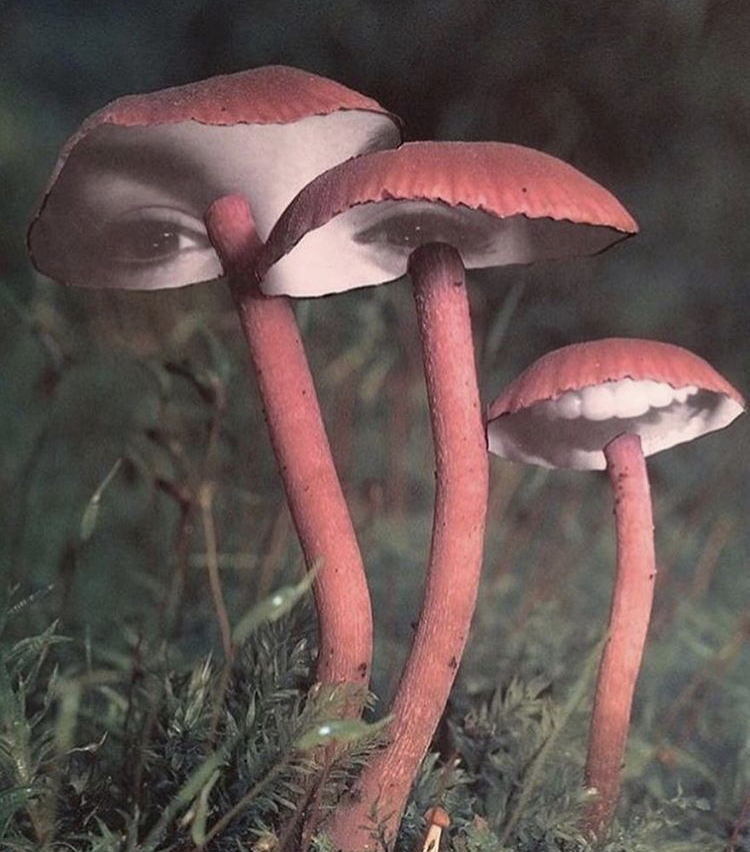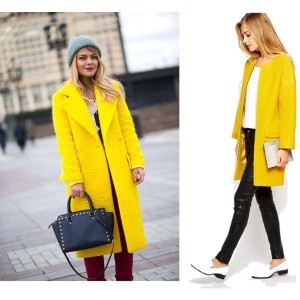The shroom boom has fermented in the zeitgeist.
I was first introduced to mushrooms beyond a vegetable when I picked up a copy of The Hidden Life of Trees. I was expecting an ecological treatise on conservationism. Instead, I discovered that vast underground “mycorrhizal networks” of fungi that connects trees and enables them to communicate and share resources and nutrients.
Since the book’s 2015 publication and 2005’s more detailed Mycelium Running, information about the wood wide web has exploded. Serious researchers and hobbyists alike seized onto the health benefits of mushrooms (remember to cook them, they reminded us).
This all came to a crescendo in 2019 when food stars (Pollan & co.) and mycologists teamed up to produce the time-lapse masterpiece, Fantastic Fungi. In the wake, we saw products touting the mind fueling properties of lion’s mane and shiitake. Four Sigmatic and Om, two of my favorite coffee substitutes, exploded. We even saw shroom fashion.
More recently, research has turned to mycology for its application in beauty, aka “mushrooms for skin.” I’m here to help you parse through the marketing and figure which claims are true, which mushrooms are beneficial for what, and where you can find them ethically and sustainably sourced when possible.
Before You Shroom
There’s one big takeaway you should know before endeavoring into mushrooms in your skincare routine. To tap into their full spectrum of benefits, you should eat and apply them.
Mushrooms can offer protective and therapeutic functions such as anti-inflammatory, antimicrobial, and antioxidant effects when eaten, but they also produce direct skincare effects when applied topically, such as skin-whitening/lightening, skin-moisturizing, wrinkle, and skin-toning benefits as well as and protection against UV rays.
For optimal results, you should eat the “fruiting body” of the fungi, not the root structure (known as the mycelium). The same goes for your beauty brands. If they don’t specify the use of the body in their product description (most don’t), you can always ask.
Please also note that this guide aims, whenever possible, to avoid toxic beaut-industry norms or buzzwords like anti-aging, youthful, and flawless or claims that products can repair or reverse when they cannot.
Reishi
May be labeled as: Ganoderma lingzhi
Perks at a glance: hydration, environmental protection, anti-inflammatory, anti-wrinkle, lightening, anti-redness, reduce acne scarring, sun protection
Reishi mushrooms have been used in skincare and supplements for over 2000 years. The fungi, which usually grows on the stumps of oak and plum trees for approximately nine months, started being used in skincare products in the commercial market in the 1980s.
When taken as a ‘nutricosmetic’ reishi can help to strengthen the body’s natural immunities, reducing skin sensitivity, healing acne scars, and improving resilience to environmental irritants. In topical skincare, reishi mushrooms are most widely used for their hydration and antioxidant properties.
According to Regan Schneider, a food scientist and the founder and CEO of beauty brand Arêmês Fermentis, “Reishi contains beta-glucans, which are responsible for attracting water from the environment to your skin, resulting in a healthy and hydrated complexion. This, in turn, creates the perfect groundwork for the synthesis of ceramides, which are the building blocks in the protective layer of your skin that keeps environmental aggressors out and hydration in.”
The fungi’s polysaccharides content also helps to regulate gene expression in aging skin cells, and protects fibroblasts from UVB-induced skin damage. Furthermore, studies found that reishi has tyrosinase inhibitory activity, which is the enzyme responsible for melanin production in the skin. This means it can work as a skin lightener.
Eat It: (just watch out for the possible side effects and who shouldn’t take it)
Slather It:
- Plant People Restore Mask with CBD (+ other shrooms)
- Prana Serum
Shiitake
May be labeled as: Lentinula edodes
Perks at a glance: anti-inflammatory, environmental protection, cellular renewal, exfoliant, lightening, antioxidant, acne prevention
Shiitake has a long history of medicinal uses and, like Reishi, can help to strengthen the body’s natural immunities and regulate hormones, which can reduce skin sensitivity, improve resilience to environmental irritants, and help fight acne. It also has 30 years of clinical data that support its use in skincare. The shroom contains phytonutrients like selenium, vitamin D, and complex B vitamins that can calm inflammation and irritation and the powerful bioactive antioxidants l-ergothioneine and lentinan that help prevent cellular breakdown and encourage faster cellular renewal and healthy collagen and elastin production.
Many beauty brands seek out shiitake for its high levels of Kojic acid, which is frequently used as a brightening agent and a natural alternative to hydroquinone, a harsher chemical that bleaches skin to fade scars and age spots. Studies have shown that Shiitake can help lighten areas of hyperpigmentation and brighten overall complexion over time.
Mushrooms For Insides:
- Sauteed fresh or frozen from your farmer’s market or local grocer
- Nootropics powder
Mushrooms For Skin:
Chaga
May be labeled as: Inonotus obliquus
Perks at a glance: environmental protection, oxidative stress protection, antiseptic, tissue regeneration, skin-lightening, treatment of skin conditions
This Northern European fungus, which literally translates into the word mushroom in Russian, was traditionally harvested for the treatment and prevention of disease. It is rich in minerals and acts as a potent antiviral and antibacterial agent to fight a wide variety of infections. In topical use, it has broad and widely-studied applications.
Its high concentration of antioxidants (ranking higher than more well-known fruits such as açai berries, blueberries, and pomegranates) also means it can protect the skin against oxidative stress and neutralize free radicals that can damage the skin, both of which can lead to wrinkles.
One study showed it can curb melanin production by reducing the activity of the tyrosinase enzyme, meaning it may help with skin lightening, reduce dark spots, and even skin tone. Finally, Chaga contains betulinic acid (most commonly used as an anticancer agent) which accelerates the regeneration of skin tissue and also acts as an antiseptic to heal wounds. Betulinic acid has been used to treat skin infections and skin conditions such as eczema, psoriasis, and dermatitis.
One interesting theory behind Chaga’s many beneficial components is that its natural defense mechanism to a cold, harsh environment means it helps protect against UV sun exposure and other pathogens.
Mushrooms For Insides:
Mushrooms For Skin:
Cordyceps
May be labeled as: Cordyceps militaris
Perks at a glance: anti-inflammatory, sun protection, environmental protection, antioxidant
Cordyceps, a rare combination of a caterpillar and a fungus and found at high altitudes in Sikkim, has long been touted as a medicinal species with many therapeutic effects such as anticancer, immunomodulatory, antioxidative, anti-aging, neuroprotective, and hepatoprotective actions like other mushrooms on this list. It grows on the fruiting body of an insect larva and is rare and expensive. As such, it is typically fermented for production and has been used commercially, but on a limited scale. Its cosmetics effects, however, are still not well documented.
A 2018 study substantiated many of the hypothesized cosmetic benefits and encouraged the use of cordyceps extracts for skincare and cosmeceutical applications for skin-whitening, anti-wrinkle, antioxidative, and sunscreen functions. Cordyceps is hailed by Dermatologists as a potent antioxidant that can help hydrate dry skin, boost collagen, and elastin production, and has even shown some promise as a topical treatment for inflammatory conditions like eczema. Its sun-protective properties stand out in particular, with most extracts in the study showing a significant photoprotective and anti-collagenase effect with a sun protection factor up to 25.
Mushrooms For Insides:
Mushrooms For Skin:
Snow Mushroom
May be labeled as: Tremella Fuciformis or “silver ear mushroom” “white jelly mushroom”
Perks at a glance: hydration, skin-lightening, healing and anti-inflammatory
This white gelatinous flower-like fungi has been consumed in traditional Chinese cuisines, especially sweet dishes, and used in Asian medicine and skincare, like Shiitake and Reishi for thousands of years.
The snow mushroom is prized for its studied effects as a humectant and is frequently used as a natural replacement for the widely-popularized hyaluronic acid in skincare. One study showed that cosmetics added with 0.05% Tremella polysaccharides had better moisture retention capacity than that added with 0.02% hyaluronic acid. [Hyaluronic acid can hold up to 1,000 times its weight in water.]
“The particles in Tremella are smaller than hyaluronic acid so it penetrates the skin more easily,” noted Dermatologist Dendy Engelman, the director of dermatologic surgery at Metropolitan Hospital in New York City in her Allure interview.
Furthermore, because they also contain a hydrophilic agent – polysaccharide glucuronoxylomannan (GXM) with anti-inflammatory and wound-healing properties largely used in cosmetology, Tremella extracts can be applied in the treatment of neurodermatitis and sclerodermatitis.
And still, the list grows like its underground network. The snow mushroom was also found to have a novel effect of inhibiting melanin formation and can be used to lighten the skin spots without the need for an added chemical reagent.
Mushrooms For Insides:
Mushrooms For Skin:
Those are the mushrooms that pack the most benefit IMHO. You can also look into lion’s main, coprinus (cauliflower), turkey tail and more.
After reading are you wondering….why is eco-beauty so expensive?
I hope this guide is helpful as a starting point for your journey in health, and life. Tell me, Are you into shrooms? What products have you tried?
Artwork: mr.babies




